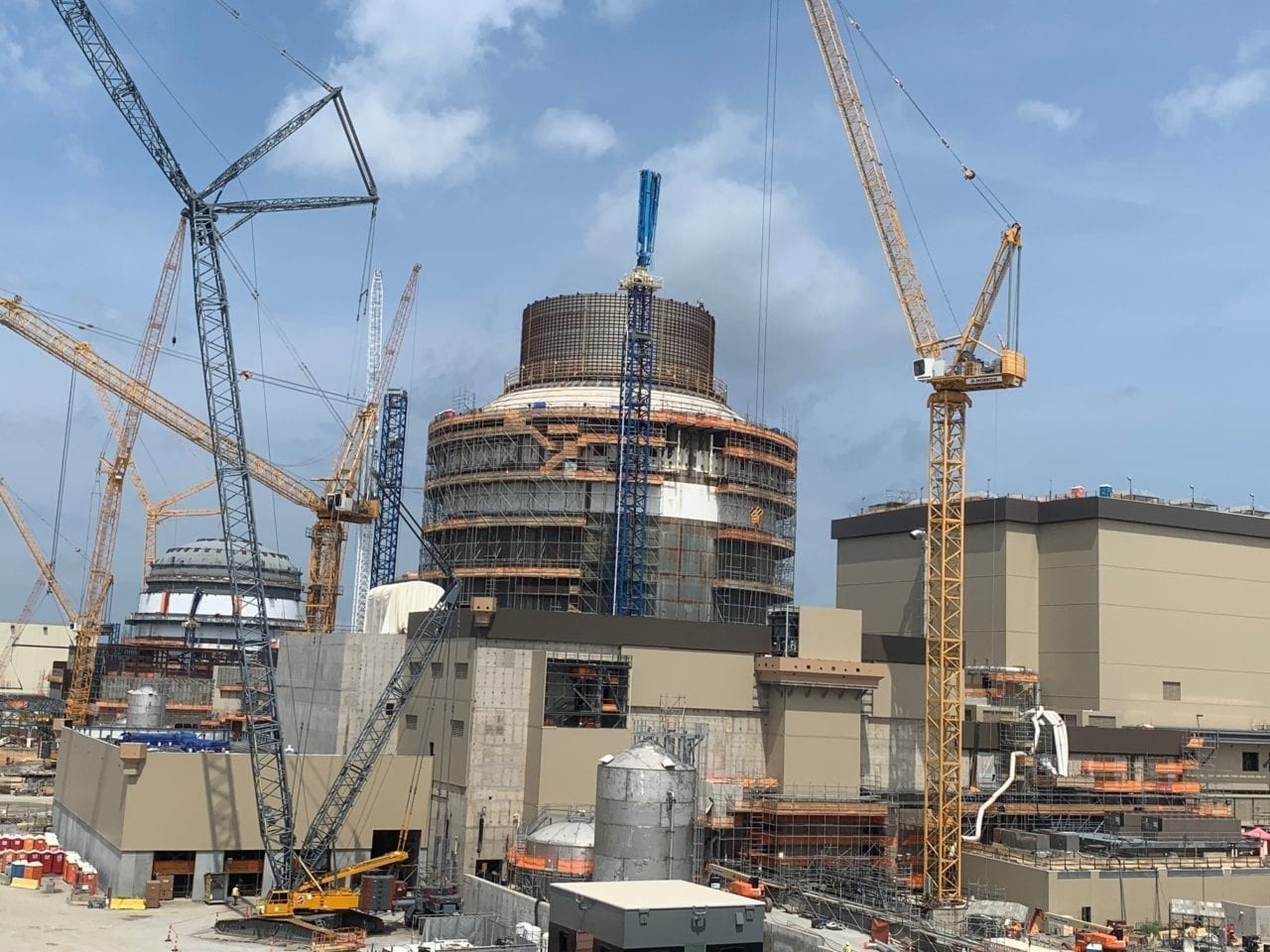The post With Vogtle Completion in Sight, Southern Company Targets Net-Zero Carbon Emissions appeared first on POWER Magazine.

Fresh off the announcement that the final module for Vogtle Unit 3 was placed at the nuclear expansion project in Georgia, Southern Company said on May 27 that it was setting “a long-term greenhouse gas (GHG) emissions reduction goal of net-zero emissions by 2050.”
The announcement was made during Southern Company’s annual stockholders meeting, which was held as an online event this year due to the COVID-19 pandemic. The company also reaffirmed its intermediate goal of a 50% reduction of GHG emissions from 2007 levels by 2030.
“I continue to be confident that we are prepared and well-positioned to meet the needs of our customers, employees, communities and investors well into the future and will succeed in the transition to a net-zero carbon future,” Tom Fanning, chairman, president and CEO of Southern Company, said in a statement. “As always, we are committed to providing clean, safe, reliable and affordable energy to the customers we are privileged to serve.”
Final Module Placed for Vogtle Unit 3
On May 22, Southern Company subsidiary Georgia Power announced a massive water tank—the final module for Unit 3—was placed atop the containment vessel and shield building roof at the project. The large module, known as CB-20, is a major part of the AP1000 reactor’s advanced passive safety system.
CB-20 will hold approximately 750,000 gallons of water, which would be used to help cool the reactor in the event of an emergency. The AP1000 plant’s passive safety systems are designed to require no operator actions to mitigate potential emergency situations. The systems use natural forces such as gravity, natural circulation, and compressed gas to achieve their safety function. No pumps, fans, diesels, chillers, or other active machinery are used, except for a few valves that automatically align to actuate the passive safety systems. The water stored in the CB-20 module can also be directed into the unit’s used fuel pool.
The modular assembly technique was instrumental in streamlining the construction process. Modules were manufactured in advance and delivered to the project site by rail and truck. The range of plant components constructed in this way included floors and wall sections, and supporting structures that surround the containment buildings and reactor vessels. A total of 1,485 major modules were manufactured and delivered to the site from 2011 through 2019 when the last module arrived.
During Southern Company’s first quarter earnings call on April 30, Fanning sounded confident that the Vogtle project would be completed in accordance with the most-recent regulatory-approved in-service dates: November 2021 for Unit 3 and November 2022 for Unit 4. Furthermore, he said site managers continue to believe they can hit target dates set in the company’s “Aggressive Site Workplan,” which are May 2021 and May 2022, respectively.
“So, look, November is what matters. We gotta beat November, and our eyes are on that. The site continues to believe they can hit a May schedule,” Fanning said during the earnings call. “Has it gotten more aggressive? Yeah—still is a reasonable shot at it.”
Carbon Emissions Decreasing
The addition of new nuclear power capacity, which is a carbon-free resource, will help Southern Company reduce GHG emissions in the future, but market factors have led to emission reductions more recently. Driven primarily by low natural gas prices, Southern Company has seen a rapid transition in its generation fleet. The company said its carbon emissions have decreased by 44% through 2019, and it now expects to achieve the 50% reduction goal well in advance of 2030—possibly as early as 2025.
According to documents distributed as part of the annual meeting notice, the percentage of Southern Company’s energy generated from coal has decreased approximately 68% and the percentage of energy generated from carbon-free sources has increased 86% since 2007. More significantly, however, the percentage of energy generated from natural gas has increased greater than 200% over that time. About 50% of Southern Company’s annual energy mix came from natural gas in 2019, with 22% from coal, 16% from nuclear, and 12% from renewables including wind, solar, hydro, biomass and landfill gas.
Southern Company expects to incorporate negative carbon solutions, including technology-based approaches such as direct air capture of carbon as well as natural methods like afforestation, to help it achieve its net-zero goal. The company also said it “will continue to reduce GHG emissions and continue our long-term commitment to energy efficiency.”
—Aaron Larson is POWER’s executive editor (@AaronL_Power, @POWERmagazine).
The post With Vogtle Completion in Sight, Southern Company Targets Net-Zero Carbon Emissions appeared first on POWER Magazine.